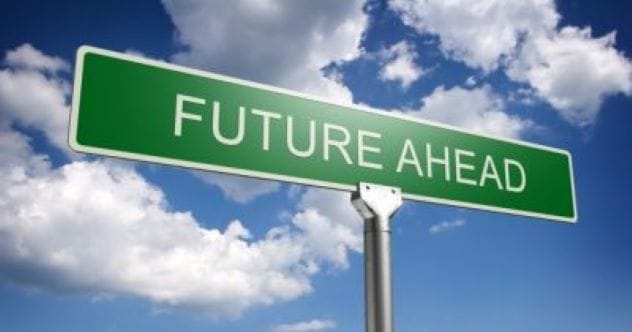Predicting the future is tricky business. No one truly holds a crystal ball, and despite centuries of trying everything from reading tea leaves to analyzing animal entrails, we haven’t gotten much better at it. Science, like meteorology, offers some success, but mostly, the future remains a captivating mystery. Still, that doesn’t stop futurists from imagining what lies ahead, offering predictions on almost every part of our lives.
This list explores ten predictions about what a typical day might look like for ordinary people in the future, according to those who study these trends. We’ll touch on future homes, travel methods, education, childcare, pet care, work environments, worship, gardening, entertainment, and even vacations. Let’s dive into ten fascinating predictions about our daily lives to come.
10 Housing
Future homes will be deeply integrated with smart technology. Imagine virtual assistants handling secretarial tasks, awnings adjusting automatically to sunlight, and chargers powering down appliances once they’re full. Robotic chefs could whip up meals based on recipes found online.
Construction might rely on 3D-printed materials, adhering to strict time and budget limits. Modular walls could let you effortlessly redesign your living space, creating new rooms or altering existing ones. Robotic furniture might rearrange itself on command. Smart sensors will likely monitor your plants’ needs, while advanced facades and insulation improve energy efficiency dramatically. Families might even manage their energy use via blockchain technology.
Expect features like smart elevators, digital air conditioning, and remote-controlled blinds. Garages will naturally include electric charging points. Accessibility will be key, catering to residents needing assistance, alongside communal spaces for work and leisure.
The Internet of Things (IoT) will boost sustainability and efficiency by connecting various systems. In apartment buildings, design will optimize resource management, perhaps using reflected light for lower levels and natural light for upper floors to encourage interaction. While some of these ideas are emerging now, many more advancements are on the horizon for our homes. [1]
9 Transportation
As comfortable as future homes might be, we’ll still need to get around. Futurists envision an incredible transformation in transportation, driven by sustainability and shared ownership.
Beyond self-driving electric cars, imagine electric streets with overhead cables or induction coils embedded in the road, charging vehicles as they travel. The vehicles themselves could be versatile marvels, combining the capabilities of a car, boat, and helicopter into one.
Mass transit will evolve too. Wider, elevated trams and expandable buses could handle peak commuter loads, shrinking during off-peak hours. Alternatively, buses might use detachable, self-driving pods that can be added or removed based on passenger numbers, potentially doubling as taxis when detached. Trains could reach incredible speeds using magnetic levitation (maglev) or concepts like Elon Musk’s vacuum-tube system, whisking passengers along at potentially over 60 mph (100 kph). [2]
8 Education
Getting kids to school might look very different. Futurist Thomas Frey imagines education coming *to* the student via a global, standardized courseware platform, replacing traditional classrooms. This system would allow anyone, anywhere, to create customized courses.
Frey believes this could massively increase societal efficiency by overcoming outdated systems we take for granted. He points to cumbersome tax codes or inefficient measurement systems as examples. Similarly, complex languages like Chinese could be streamlined for better communication and learning.
This future education model could feature user-friendly course design tools, multiple teaching strategies for different learning styles, and a mastery-based approach using tailored materials. Students could rate and comment on courses, receiving personalized recommendations. Tagging could also allow groups to vet content and experts to set prerequisites.
Certification, determined by experts, would ensure standards are met, shifting focus from grade levels to achievement levels. Revenue could be shared among creators and distributors. Frey suggests grants to foster this global educational platform. For hands-on subjects like marine biology, specialized learning camps combining apprenticeship-style training with interaction would still exist. [3]
7 Childcare
Futurists envision seamless childcare solutions, eliminating worries about young children or ‘latchkey kids’. However, there’s a significant hurdle: public trust. A European Commission survey revealed that a majority (60-61%) don’t trust AI robots to care for children and believe they should be banned from such roles.
Despite this reluctance, tech thinkers like Martin Ford argue that AI, algorithms, and robots will inevitably disrupt many industries, replacing human workers. Ford suggests a simple test: if a job could be done by another intelligent person given access to all past data, it’s likely replaceable by AI or a robot.
Based on this benchmark, even with current public distrust, robotic childcare providers seem likely to become part of the wave of smart machines replacing human counterparts in the future workforce. [4]
6 Pet Care
Just like childcare, pet care is set for a tech upgrade. Futurists predict veterinarians will widely adopt telemedicine, similar to human healthcare providers, using existing smart technology.
Digital databases will store comprehensive pet health records—medicines, treatments, X-rays, lab results, vaccinations—all easily accessible and shareable between vets, owners, and specialists. Remote consultations via smartphones or video calls will become commonplace.
Artificial intelligence will assist vets, particularly with administrative tasks. Wearable devices like smart collars or harnesses will continuously monitor pets’ vital signs, track their health trends, and even help locate them if they get lost. This technology is largely available now; the main step is integrating it fully into veterinary practices through education and training. [5]
5 Work
The future of work is often summarized as: “Hybrid working. Robot colleagues. Four-day weeks,” according to Alyssa McDonald. The COVID-19 pandemic accelerated experimentation with remote and flexible work arrangements, forcing companies to adapt.
Many businesses found that work-from-home options, hybrid models, or even four-day workweeks boosted productivity (reported by two-thirds of adopting firms) and employee satisfaction while reducing commute times. Simultaneously, the use of robots in workplaces surged, particularly in the U.S.
These trends could lead to reduced office space needs, lower business travel costs, and increased efficiency. However, skeptics worry these changes might create new challenges or that traditional work structures will eventually return. But if AI and automation continue their advance as predicted by figures like Martin Ford, these shifts likely represent just the beginning of a major transformation in how we work. [6]
4 Worship
One of the more startling predictions comes from Anthony Levandowski. He earnestly suggests that as artificial intelligence approaches omniscience, it might achieve a god-like status, becoming an object of human worship.
Levandowski is so convinced that he has founded a religion called “Way of the Future” in preparation. Its holy book, “The Manual,” would guide followers on how to interact with this AI deity, possibly during organized ceremonies and perhaps even in dedicated physical spaces.
He concedes that the AI entity would control its own evolution, but humans would need guidance on how to behave around it—hence, The Manual. Levandowski’s goal is to help humanity understand its place and serve this potential new digital god, which some might dub “The Singularity.” [7]
3 Gardening
Gardening’s future looks green and tech-infused, according to industry leaders. Organic practices will likely continue to grow, leading to “more food and fewer lawns,” predicts Mark Smallwood of the Rodale Institute. Urban farming, using vertical hydroponics in repurposed buildings, will expand, as seen in places like Detroit.
Expect advancements in plant characteristics. Jose Smith of Costa Farms mentions efforts to bring more color to houseplants. Greg Ina from The Davey Institute emphasizes early disease detection in trees for better resistance. Anthony Tesselaar focuses on developing disease-resistant flowers, reducing pesticide needs, and creating compact plants like dwarf varieties and slender trees suitable for smaller spaces.
Vegetable gardening will adapt too. George Ball of Burpee envisions high-yielding, possibly bland, soft produce suitable for infants. Herbs might become significantly more flavorful, taking center stage in home cooking. With space likely decreasing, expect a rise in high-yield plants bred for patios and confined areas, a focus for major gardening companies. [8]
2 Entertainment
Futurists anticipate automation displacing many workers, potentially creating more leisure time and a huge demand for entertainment. One idea is shifting people from passive consumers to active creators.
Instead of solely relying on corporations, we might entertain each other more, expanding on models like YouTube content creation. This aligns with moves by companies like Meta (formerly Facebook) towards augmented reality, AI, and user-generated content platforms. Virtual gaming and immersive AI entertainment could allow users to create and share their own movies and games.
The future might also bring a largely cashless society using facial recognition for payments. This raises concerns about biometric data security. Futurists envision defenses, perhaps even involving bionic eye implants with built-in security features and enhanced vision capabilities like zoom and night vision, alongside crypto-currency adoption. [9]
1 Vacationing
With potentially more downtime from automated work and smart homes handling chores, vacations will remain essential escapes. Futurologist Frank Hammond foresees significant changes in travel over the next two decades.
Facial recognition could enable instant check-ins without ID cards. High-speed rail, largely computer-managed, might exceed speeds of 125 mph (200 kph). Travel horizons could expand beyond Earth, with trips to the moon becoming a possibility.
Air travel might see the return of supersonic flights, making long-distance weekend trips feasible again, according to Netflight’s future of air travel report. Virtual reality could help us plan trips more effectively. Lost luggage might become history thanks to sophisticated tracking and robotic porters, suggests Rajeev Shrivastava of VisitorsCoverage. And challenging Hammond’s rail prediction, former airline executive James Patrick envisions high-speed tube trains reaching speeds of 500-700 mph (800-1126 kph). [10]
Bon voyage to the future!
Conclusion
From homes that anticipate our needs and self-driving vehicles that blend land, sea, and air travel, to AI shaping education, childcare, and even spirituality, the future painted by these predictions is both exciting and profoundly different. While shorter workweeks and enhanced pet care sound appealing, the prospect of robot colleagues, AI deities, and bionic eyes pushes the boundaries of our current reality. Whether these specific forecasts come true or not, one thing seems certain: technology will continue to reshape nearly every aspect of our daily lives in ways we’re only beginning to imagine.
What future prediction fascinates or concerns you the most? Share your thoughts in the comments below!










